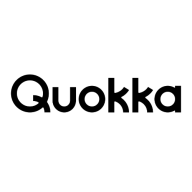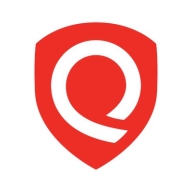

Qualys Web Application Scanning and Q-mast are competitors in web application security. Q-mast often has the upper hand due to its user-centric approach and detailed reporting despite its higher cost.
Features: Qualys Web Application Scanning provides comprehensive scanning capabilities, integration with other security solutions, and a seamless protection framework. Q-mast offers advanced reporting tools, customization of scans, and supports unique application environments.
Ease of Deployment and Customer Service: Q-mast provides a straightforward deployment process with dedicated customer support. Qualys Web Application Scanning requires a more involved deployment but offers accessible online resources and comprehensive documentation.
Pricing and ROI: Qualys Web Application Scanning typically offers a more affordable pricing model delivering significant ROI with its extensive features. Q-mast, at a higher price point, justifies its cost with enhanced customization and detailed analytics, offering long-term value for organizations needing specialist features and insights.
| Product | Market Share (%) |
|---|---|
| Qualys Web Application Scanning | 2.1% |
| Q-mast | 0.3% |
| Other | 97.6% |

| Company Size | Count |
|---|---|
| Small Business | 8 |
| Midsize Enterprise | 6 |
| Large Enterprise | 27 |
Q-mast enhances mobile app security by embedding it into development workflows to detect risks before release. It provides defense-grade app scanning leveraging threat research to identify vulnerabilities and insights.
Designed for mobile developers, Q-mast empowers security and development teams to mitigate issues early, reducing costs and limiting zero-day attack exposure. Its capabilities in scanning and risk identification are backed by extensive threat research, making it a critical tool in app development lifecycles.
What are the key features of Q-mast?Q-mast is widely implemented across industries to prevent data breaches and fraud. It is especially favored in finance and healthcare sectors for compliance support, proving essential in highly-regulated environments.
Qualys Web Application Scanning (WAS) is a fully cloud-based web application security scanner. The scanner will automatically crawl periodically and test web applications to discover potential vulnerabilities, including cross-site scripting (XSS) and SQL injection. The consistent testing equips the automated service to generate consistent results, lessen false positives, and offer the ability to scale to protect thousands of websites effortlessly.
Qualys Web Application Scanning is bundled with different scanning technology to carefully scan websites for malware infections and will send notifications to website owners to assist in preventing blacklisting and brand reputation damage. As digital transformation takes place in various organizations, Qualys WAS gives organizations the ability to track and document their web app security status through its interactive reporting capabilities.
Qualys WAS empowers organizations to remediate any web application vulnerabilities quickly. Some of the key tools offered are:
Benefits of Qualys Web Application Scanning
Qualys Web Application Scanning offers many benefits, including:
Reviews from Real Users
Qualys Web Application Scanning stands out among its competitors for a variety of reasons. Two of those reasons are its progressive scan and quick detection of vulnerabilities.
P.K., a senior software developer at a tech vendor, writes, "The feature that I have found most valuable is the progressive scan. It is good. It's done in 24 hours."
Nagaraj S., lead cybersecurity engineer at a tech service company, notes, "I have found the detection of vulnerabilities tool thorough with good results and the graphical display output to be wonderful and full of colors. It allows many types of outputs, such as bar and chart previews."
We monitor all Static Application Security Testing (SAST) reviews to prevent fraudulent reviews and keep review quality high. We do not post reviews by company employees or direct competitors. We validate each review for authenticity via cross-reference with LinkedIn, and personal follow-up with the reviewer when necessary.